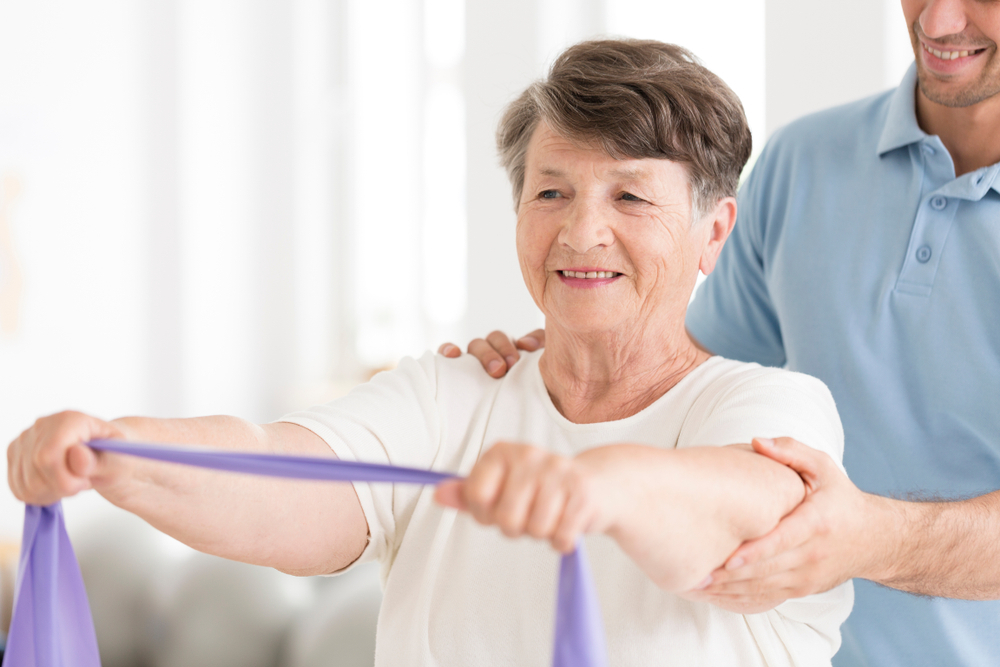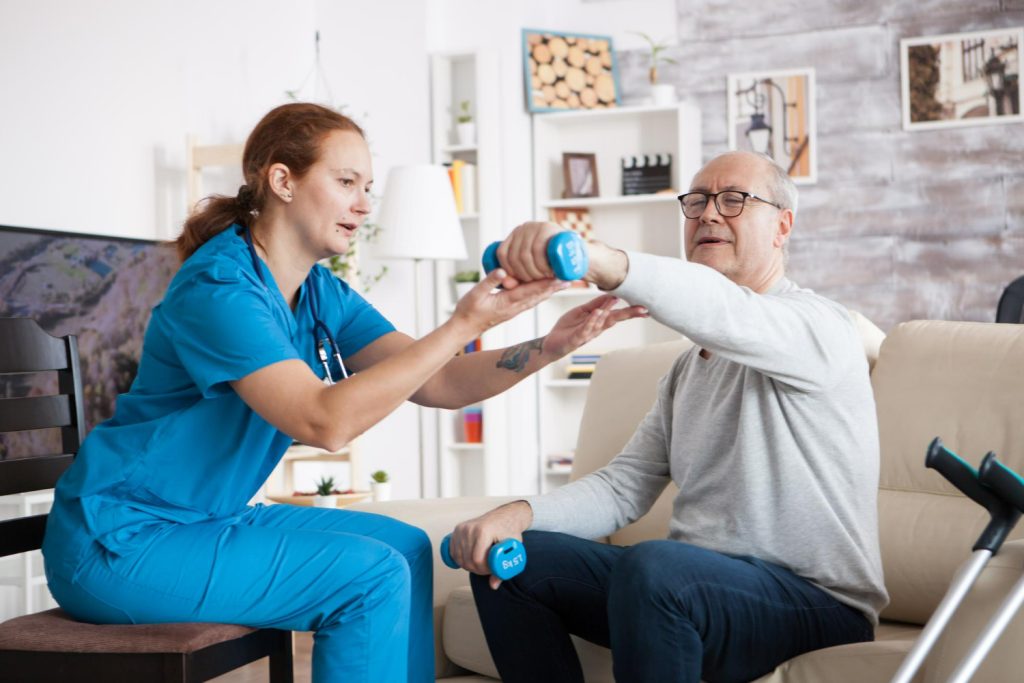Stroke Rehabilitation For Patients
Tedavi Medical Center For Stroke Rehabilitation In Turkey
Stroke Rehabilitation Activities In Turkey Treat Stroke Patients, Also Known As Cerebral Thrombosis. Stroke Is One Of The Most Severe Diseases That Can Cause Disability And Motor Weakness. At Tedavi Medical Center In Turkey, We Offer The Best Specialized Programs For Stroke Rehabilitation In Turkey.


Stroke:
A Stroke Occurs When A Blood Vessel In The Brain Ruptures, Or Due To A Blockage That Prevents Blood And Oxygen From Reaching The Brain Tissue. This Disruption Leads To Nerve Cell Damage And The Loss Of Functions That These Cells Were Responsible For.
Types Of Stroke:
Transient Ischemic Attack (TIA)
It Is A Blood Clot That May Resolve Naturally And Is Considered A Warning Sign For Stroke Patients.
Ischemic Stroke
It Is Caused By A Blockage In One Of The Arteries And Is The Most Common Type Of Stroke.
Hemorrhagic Stroke
It Is Caused By A Rupture Or Leakage In The Blood Vessels.
At Tedavi Medical Center, We Apply Our Expertise And Advanced Techniques To Serve Stroke Patients. We Aim To Rehabilitate Stroke Patients And Strengthen Their Motor And Cognitive Abilities Through Tailored Individual Rehabilitation Programs For Each Patient.
We Use The Latest Technologies And The Best Rehabilitation Programs To Ensure Maximum Benefit And Rapid Progress For The Patient. Our Goal Is Always To Help Patients Regain Their Independence And Improve Their Quality Of Life.
Raising Awareness About Stroke Symptoms And Causes:
Recognizing Stroke Symptoms And Responding Quickly Can Help Minimize Damage And Increase Chances Of Recovery. Tedavi Medical Center In Turkey Strives To Raise Awareness In The Community About This Important Topic.
The Main Symptoms Of A Stroke:
- Speech Problems: Difficulty Speaking Or Understanding Others.
- Paralysis Or Numbness: It May Appear In The Face, Arm, Or Leg, Often On One Side Of The Body.
- Vision Problems: Including Blurry Vision Or Sudden Loss Of Vision.
- Headache: It May Be Severe And Sudden, Accompanied By Dizziness Or Vomiting.
- Difficulty Walking: Includes Loss Of Balance And Stumbling.
The Main Causes Of Stroke:
A Stroke Occurs Due To A Problem In Blood Flow To The Brain. There Are Two Main Types:
- Ischemic Stroke: Caused By A Blockage In An Artery, Which Prevents Blood Flow.
- Hemorrhagic Stroke: Occurs Due To A Leak Or Rupture In The Blood Vessels Within The Brain.
In Addition To These Types, There Is The Transient Ischemic Attack (TIA), Which Is Considered A Warning Sign For A Stroke But Does Not Leave Permanent Symptoms.
At Tedavi Medical Center, We Recommend Seeking Immediate Medical Help If Any Of These Symptoms Are Noticed. Timely Care Increases The Chances Of Recovery And Returning To A Normal Life.
Types Of Stroke Treatments:
A Stroke Is An Emergency Condition That Requires Immediate Intervention, And Early Treatment Can Significantly Reduce The Damage That May Occur In The Brain. Therefore, If You Suspect A Stroke In Yourself Or Someone Else, Do Not Delay In Seeking Medical Help.
Medications:
Emergency Procedures:
- Clot Removal: A Special Device Is Used To Remove The Clot From Within The Blood Vessels.
- Hemorrhagic Stroke Surgery: Surgery To Remove Collected Blood, Surgery To Reduce Pressure Within The Brain.
- Artery Narrowing: In Some Cases, Stents May Be Used To Reduce The Risk Of Artery Rupture.
Rehabilitation May Include:
- Physical Therapy: To Improve Strength, Coordination, And Movement.
- Occupational Therapy: To Learn New Skills To Adapt To Daily Challenges.
- Speech Therapy: If There Are Issues With Speaking Or Swallowing.
- Psychological Therapy: To Help The Patient And Their Family Adapt To The Changes In Their Lives.
Recovery Takes Time, And Some Individuals May Need An Extended Period Of Support And Assistance. Rehabilitation Can Significantly Help Improve The Quality Of Life For Stroke Patients.
Benefits Of Rehabilitation After A Stroke:
Rehabilitation After A Stroke Offers Many Benefits, Including The Following:
Because We At Tedavi Combine Medical Expertise And Advanced Technology, We Have The Best Medical Staff In Turkey. We Also Work With Doctors Specializing In Rehabilitation For Patients After A Stroke. Treatment At Tedavi Is Always Conducted According To The Best Global Safety Standards, In Rooms Equipped With The Latest Devices And Equipment.
The Costs Of Stroke Rehabilitation In Turkey
Frequently Asked Questions
The Typical Duration Of A Patient's Stroke Rehabilitation Program Is Determined Based On The Severity Of The Stroke They Experienced, While Taking Into Account The Complications That Affected The Patient Due To The Stroke. Some Patients May Not Need A Long Period, While Others May Require Several Months Or Even Years To Recover. During The Recovery Period, The Patient's Health Condition Will Be Reassessed Periodically, And The Rehabilitation Treatment Plan Will Be Adjusted Based On The Patient's Response To The Treatment.
It Is Recommended To Start The Rehabilitation Process Quickly After A Stroke, As Prompt Action Enhances The Chances Of Recovery And Regaining Lost Abilities And Skills. Rehabilitation Typically Begins Within 24 To 48 Hours After The Stroke Occurs, While The Patient Is Still In The Hospital.
Yes, There Are Several Different Types Of Stroke Rehabilitation Programs. The Healthcare Team Assesses The Patient's Health Condition, Age, The Severity Of The Stroke They Experienced, And The Extent Of The Damage Caused By The Stroke. Based On This Assessment, The Best Stroke Rehabilitation Program Is Determined For The Patient.
Certainly, The Stroke Rehabilitation Program Includes Activities To Treat Speech Or At Least Help Patients Communicate More Easily With Their Surroundings. The Stroke Rehabilitation Program May Involve Practicing Speaking And Listening, Or Using Gestures. Speech Therapy Phases In The Stroke Rehabilitation Program Can Help Strengthen Muscles And Coordination To Improve The Speed, Rhythm, And Accuracy Of The Patient's Speech.
The Healthcare Team Assesses The Patient's Health Condition, Age, The Severity Of The Stroke They Experienced, And The Extent Of The Damage Caused By The Stroke. Based On This, They Will Provide Advice Regarding Any Necessary Lifestyle Changes.
The Healthcare Team Assesses The Patient's Health Condition, Age, The Severity Of The Stroke They Experienced, And The Extent Of The Damage Caused By The Stroke. Based On This, They Will Decide On The Best Treatment For The Patient's Stroke Rehabilitation.
Tedavi Is The Best Place In Turkey For Stroke Rehabilitation Because We Combine Medical Expertise And Advanced Technology. We Have The Best Medical Staff In Turkey, And We Work With Doctors Specializing In The Rehabilitation Of Patients After A Stroke. Treatment At Tedavi Is Always Conducted According To The Best Global Safety Standards, In Rooms Equipped With The Latest Devices And Equipment.
Feel Free To Contact Us And Get More Information About Stroke Rehabilitation Programs.
Get A Free Consultation
Get A Free Consultation
You Can Now Get A Free Consultation And Learn All The Details That Matter To You About Your Health Condition.
